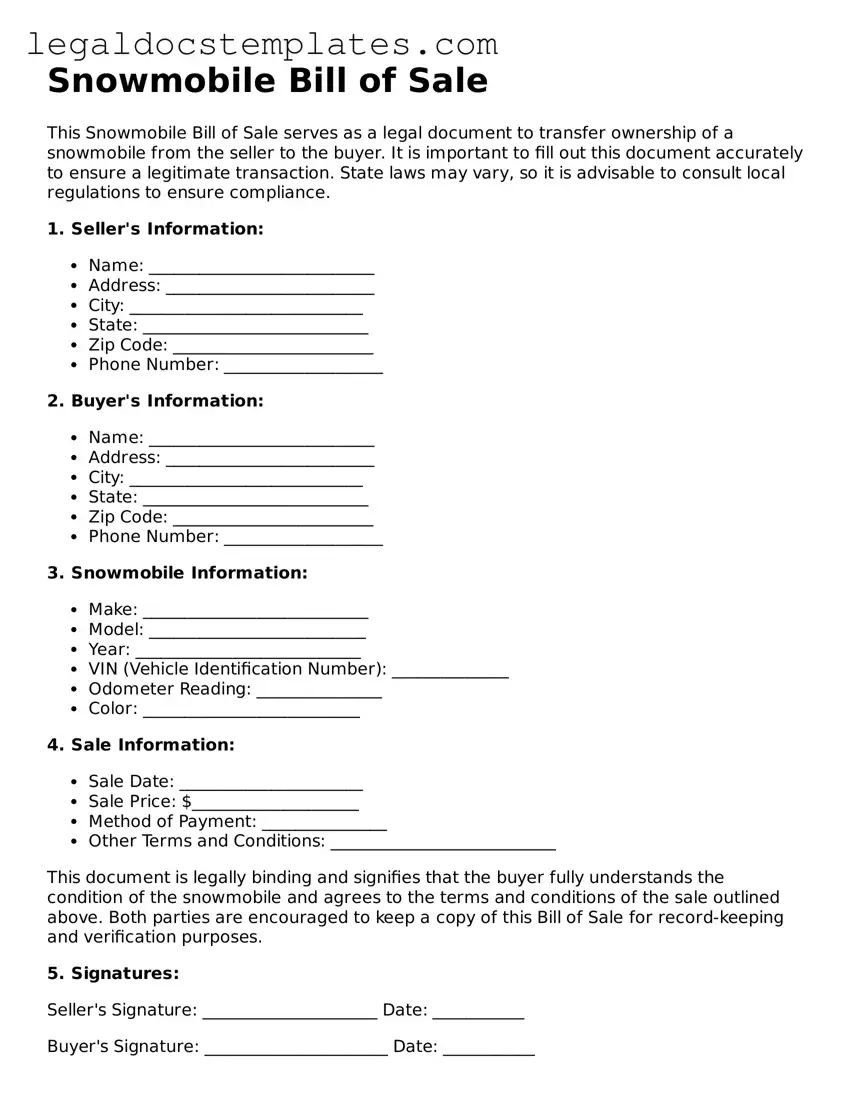The Snowmobile Bill of Sale form shares similarities with the Vehicle Bill of Sale, as both serve as legal documents providing evidence of a transaction between a buyer and a seller. Specifically, they outline the details of the sale, including the price, date, and identification information of the item (vehicle or snowmobile) sold, thereby officially transferring ownership from the seller to the buyer. These documents are essential for registration processes and confirming legal ownership.
Similar to the Snowmobile Bill of Sale form, the Boat Bill of Sale is used in transactions involving watercraft. This document captures essential transaction details such as the make, model, year, and sale price of the boat, along with the particulars of the buyer and seller. Like its snowmobile counterpart, it serves to solidify the change of ownership and is often required for the registration of the boat with the relevant state authorities.
The Equipment Bill of Sale is another document that bears resemblance to the Snowmobile Bill of Sale form. It is commonly used for the sale of machinery or other equipment, recording specifics about the equipment sold, the sale price, and the parties involved. This document ensures that the transfer of ownership is recognized legally, providing both buyer and seller with a record of the transaction that can be useful for taxation and legal purposes.
A Firearm Bill of Sale form is also akin to the Snowmobile Bill of Sale, though it specifically details the sale of a firearm. This document includes critical information such as the make, model, caliber of the firearm, and the personal details of the buyer and seller. Beyond recording the transaction's specifics, it serves an important role in ensuring the lawful transfer of ownership, given the regulatory requirements surrounding firearm ownership.
The Pet Bill of Sale form is designed for transactions involving animals, yet shares commonalities with the Snowmobile Bill of Sale by providing a legal record of the sale. It typically includes details about the breed, age, health information of the pet, and the terms of the sale. This form is crucial for establishing the legal ownership of the pet, with implications for licensing and vaccinations.
An Aircraft Bill of Sale form, while covering a more specialized domain, resembles the Snowmobile Bill of Sale in function. It documents the sale of an aircraft, including identifiers like serial numbers, model type, and other pertinent details. This form is vital for the aircraft's registration process and legal ownership transfer, mirroring the snowmobile form's role in vehicular sales.
The Business Bill of Sale form intersects with the Snowmobile Bill of Sale in its purpose to document the sale of an asset, in this case, a business or part of a business. It details the transaction, listing assets transferred, the sale price, and conditions of the sale. This document is crucial for taxation, legal liabilities, and the continuation of business operations under new ownership.
Lastly, a Real Estate Bill of Sale parallels the Snowmobile Bill of Sale, though it is used for transactions involving property. It outlines specifics such as property boundaries, price, and conditions of the sale. Although real estate transactions often require more comprehensive documentation, this form plays a critical part in the initial stages of property ownership transfer.
